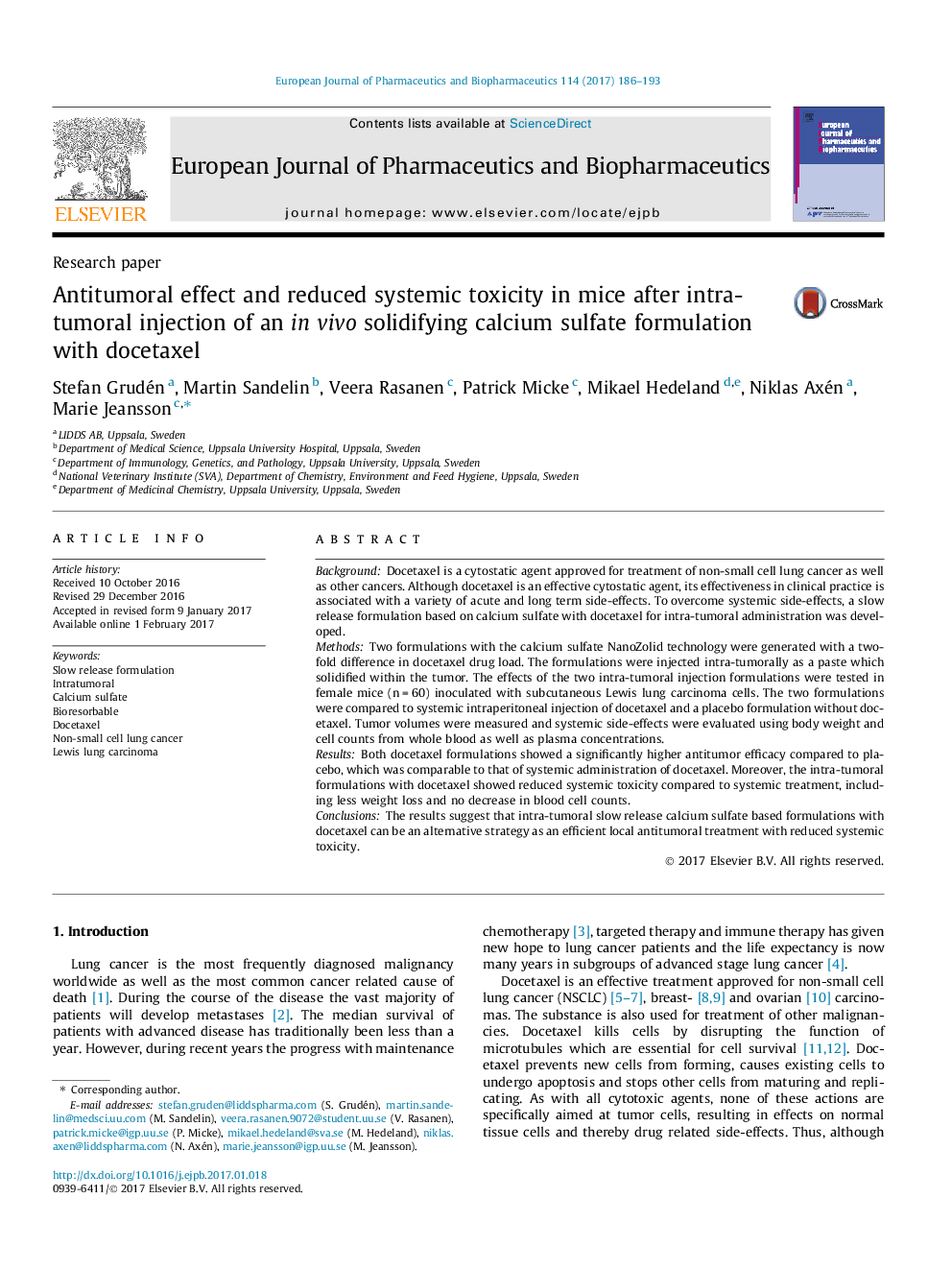| Article ID | Journal | Published Year | Pages | File Type |
|---|---|---|---|---|
| 5521455 | European Journal of Pharmaceutics and Biopharmaceutics | 2017 | 8 Pages |
BackgroundDocetaxel is a cytostatic agent approved for treatment of non-small cell lung cancer as well as other cancers. Although docetaxel is an effective cytostatic agent, its effectiveness in clinical practice is associated with a variety of acute and long term side-effects. To overcome systemic side-effects, a slow release formulation based on calcium sulfate with docetaxel for intra-tumoral administration was developed.MethodsTwo formulations with the calcium sulfate NanoZolid technology were generated with a twofold difference in docetaxel drug load. The formulations were injected intra-tumorally as a paste which solidified within the tumor. The effects of the two intra-tumoral injection formulations were tested in female mice (n = 60) inoculated with subcutaneous Lewis lung carcinoma cells. The two formulations were compared to systemic intraperitoneal injection of docetaxel and a placebo formulation without docetaxel. Tumor volumes were measured and systemic side-effects were evaluated using body weight and cell counts from whole blood as well as plasma concentrations.ResultsBoth docetaxel formulations showed a significantly higher antitumor efficacy compared to placebo, which was comparable to that of systemic administration of docetaxel. Moreover, the intra-tumoral formulations with docetaxel showed reduced systemic toxicity compared to systemic treatment, including less weight loss and no decrease in blood cell counts.ConclusionsThe results suggest that intra-tumoral slow release calcium sulfate based formulations with docetaxel can be an alternative strategy as an efficient local antitumoral treatment with reduced systemic toxicity.
Graphical abstractDownload high-res image (136KB)Download full-size image
